The Dark And Cold Months Are Here But Still Some Birds And Fall Beauty At The Susquehanna Wetlands.
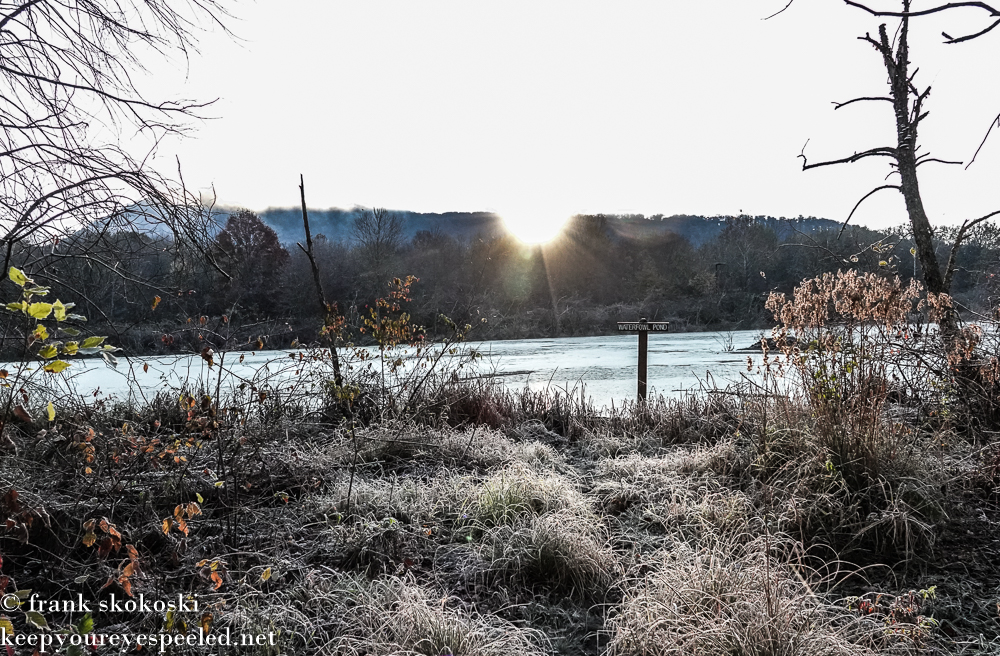
It was dark and cold when I awoke Saturday morning and went for my usual two mile morning walk. It was still dark and cold when I got home from my usual two mile morning walk. Actually, Saturday, November 7, was the latest the sun will rise here in Northeastern Pennsylvania. It rose at 7:41 a.m. We turn the clocks back Sunday morning so it will rise at 6:42 a.m. Sunday morning. It will rise later every day until early January but the latest sunrise then will be 7:31 a.m. So Saturday was darkest it will be, in the morning anyway. We won’t get into the night sunsets and dark now. 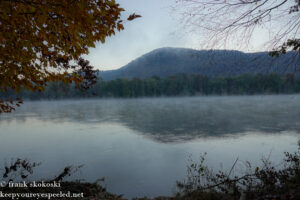
As I usually do on my Saturdays, I decided to hike in the Susquehanna Wetlands in Salem Township. It is located about 25 miles from my home in Hazle Township in Luzerne County. It was still dark and cold when I arrived there at around 8 a.m. The sun was up, but still hidden behind the Council Cup mountain. It was a cold 24 degrees when I exited my Jeep and walked down to the Susquehanna River. It’s waters had receded some since my visit last week but were still pretty high. There was a fog floating over the river. As I walked down to the river bank, I slid on some mud and almost into the river. The mud was very slippery and I flew up in the air an landed on my butt. Ouch.
After I recovered from my fall, I walked into the wetlands. The trails were now littered with leaves and most of the trees have lost their leaves. It was still pretty dark when I began my walk. 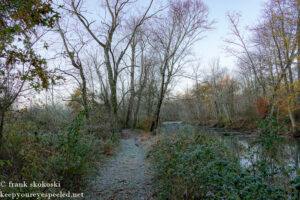
The soon sun rose over the mountains and quickly lit up the wetlands. 
But it was still cold. And there was a thick frost on the grass and leaves on the trail. 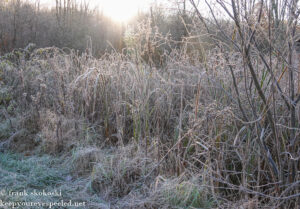
The trails were quiet. I heard almost no bird song at first. (I did hear an eagle at the river). There were no insects or frogs sounds either. Just cold and quiet. I walked on the frost covered leaves and admired the beauty of the frost on some of the leaves,
princess pine or rare club moss. 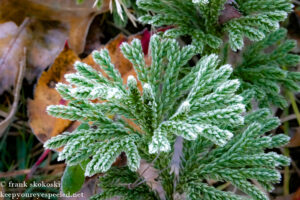
The wood ducks were gone. I missed having them elude my efforts to photograph them every week. I heard a red tailed hawk, and saw a pileated woodpeckers but the first bird I was able to photograph was this plump, little, 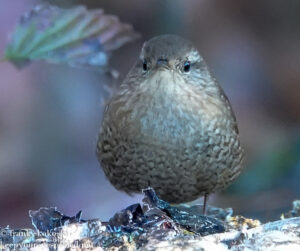
I walked back down to the river . The sun, although still low on the horizon, was now shinning through the treetops, illuminating the colorful leaves that remained on the trees. 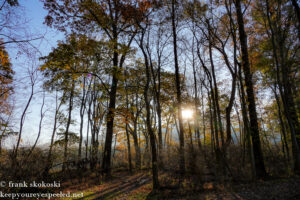
In fact there was still a lot of leaves on some of the ancient oak trees along the river,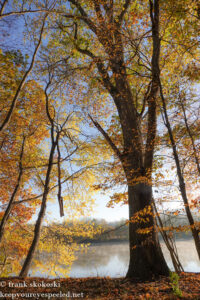
giving me a glimpse of the peak Autumn colors I missed when I was in the Dominican Republic last week. 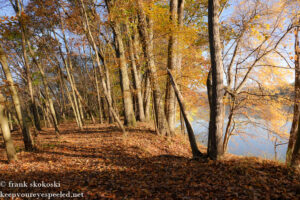
I left the wetlands, and as I neared the river lands area of the nature preserve, I came to an area with trees covered in poison ivy vines. I learned during the past few Winters in the wetlands that poison ivy has berries and that birds like poison ivy berries. And, there were birds here. Lots of them. The first I saw were a small flock of white-throated sparrows, feeding on, poison ivy berries. 
There was also a downy woodpecker feeding on, poison ivy berries,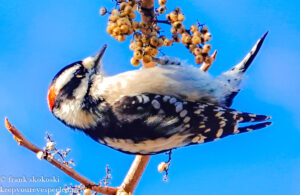
as was this red bellied woodpecker, 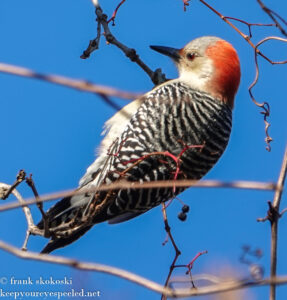
a small flock of tufted titmice, all feeding on the berries of this plant feared by humans. . Yes, poison ivy berries are a very important source of food for the birds and other wildlife in the dark and cold months of the year.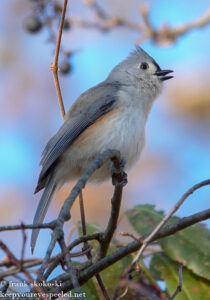
I watched the birds in this area for about 15 minutes hoping others would show, when they didn’t I walked over to the river lands.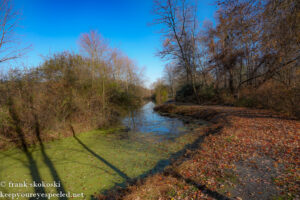
I saw another small flock of white-throated sparrows and a few winter wrens. They quickly flew away when this coopers hawk arrived and perched in a nearby treetop. 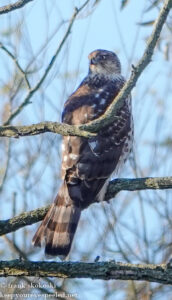
The weak November sun did it’s best to try and warm up the cool morning air. It wasn’t too successful and my fingers and toes were still cold when I walked past Lake- Took-A-While and started my return hike. The lake sparkled under the clear blue skies.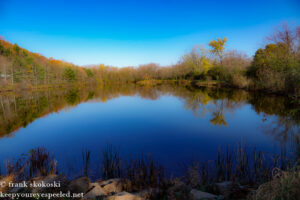
As I walked along the lake I saw a double-crested cormorant swimming and diving on the cold waters of the lake. Earlier I saw some folks trying to identify a bird they saw on the other side of the lake. I believe this was the bird they saw . Here is a link to a gallery with some more photographs of the birds I saw on my hike. Susquehanna Wetlands hike birds November 6 2021. 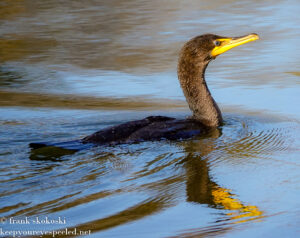
It was another quiet and peaceful walk back to the wetlands.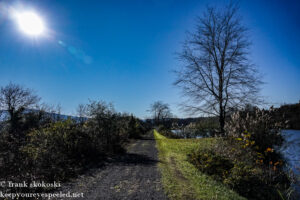
The sun shone as strongly as it could from the southern horizon.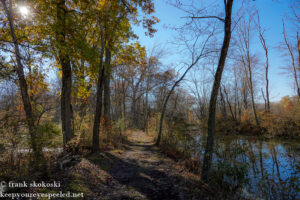
It lit up the leaves remaining on the trees along the ponds and canals along the lake.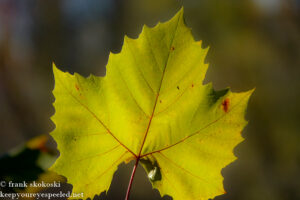
I didn’t see anymore birds, but I heard the cries of a red-tailed hawk. This could have been the reason the birds were gone, unlike the birds I saw earlier, red-tailed hawks don’t eat poison ivy berries. Unfortunately smaller birds are on their diet. They must eat too. It was another wonderful hike in this special place I have come to love. Here is a link to a gallery with more photographs from my hike. Susquehanna Wetlands hike November 6 2021. 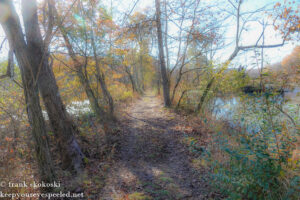
“In November, some birds move away and some birds stay. The air is full of good-byes and well-wishes. The birds who are leaving look very serious. No silly spring chirping now. They have long journeys and must watch where they are going. The staying birds are serious, too, for cold times lie ahead. Hard times. All berries will be treasures.”
―
Categories
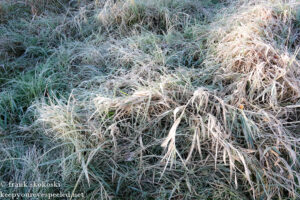
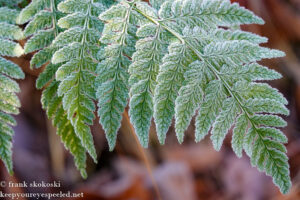
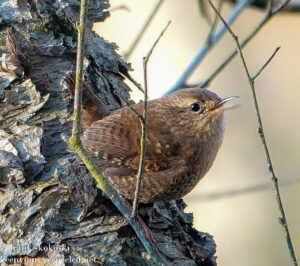
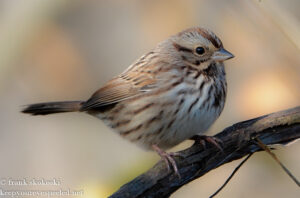
Recent Comments